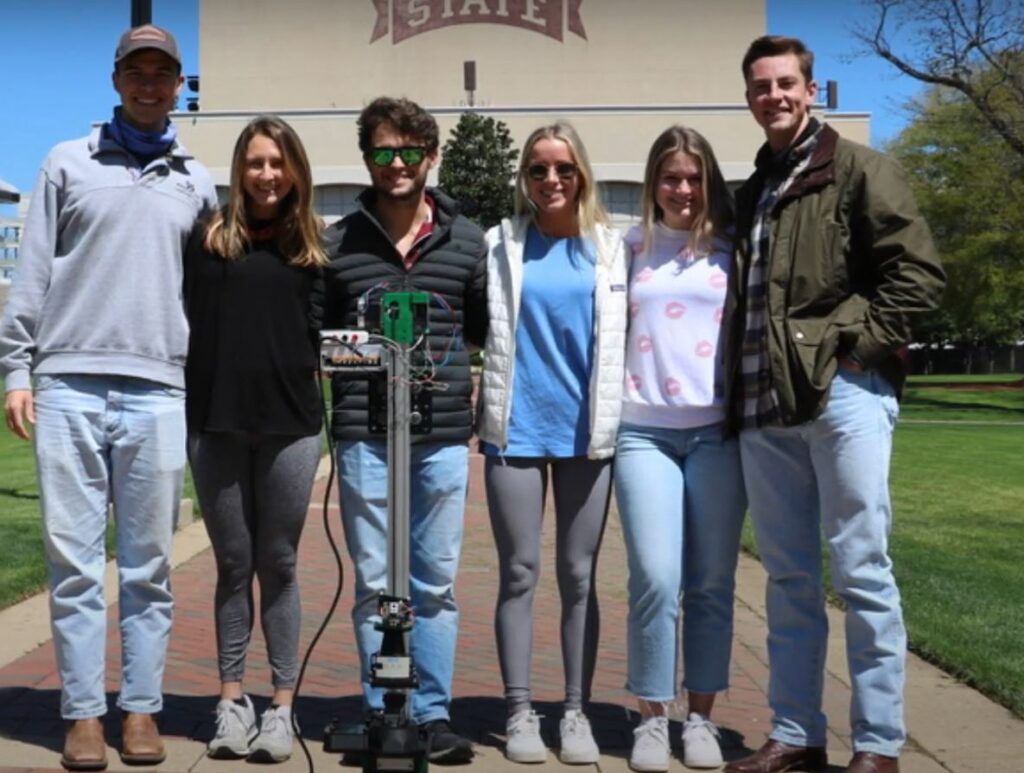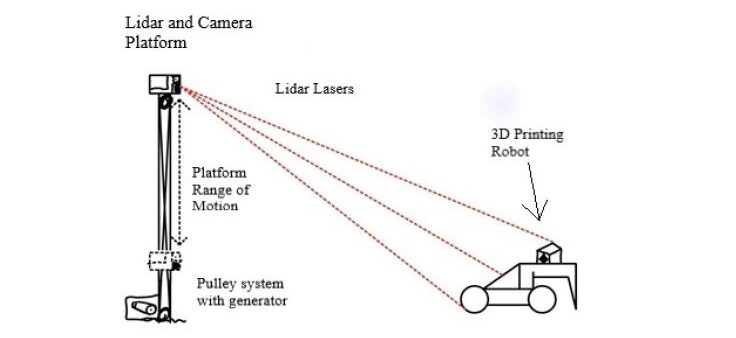Using LiDAR technology, Mississippi State University students created 3D Mobile, an autonomous construction platform with many applications
Students Gentry Meinecke, Jackson Holland, Nate Risley, Sara Skrocki, Addy Hughes, and Braden Garrison from Mississippi State University participated in SICK’s TiM$10K Challenge for the 2020-2021 school year. They developed a three-dimensional mobile task-performing machine using LiDAR technology to guide it.
Limited precision and mobility are just two issues that surround 3D additive and subtractive construction methods. Some LiDAR devices use GPS receivers for mapping capability, but GPS inaccuracies hinder the sensor’s ability to be applicable in autonomous construction projects. Utilizing the LiDAR sensor as a reference tool, the team’s design can perform small subtractive autonomous construction operations.
“3D additive is basically like 3D printing, but people assume that’s all it’s good for. With 3D subtractive, we are implying that the 3D mobile platform itself could be something that takes away space or digs out trenches or dredges holes in the bottom of rivers,” Garrison said.
The team’s 3D mobile system consists of an aluminum beam mast, a mobile robot, an elevator pulley system, and a stationary command center that provides accurate three-dimensional data to the mobile robot. The design can be transported and could be beneficial for companies that have humans completing repetitive tasks with heavy machinery. It can run at a jobsite continuously without breaks, unlike a human.
“Ideally our design could be used with a platform that builds with cement like a 3D builder or machinery that dig trenches,” Garrison said.
Agricultural trench digging is done manually with large machinery, but with 3D Mobile and its utilization of a LiDAR sensor as a referencing device, the ability for autonomous construction performance is possible.
One of two main challenges the team faced was their unfamiliarity with LiDAR technology. The second, was turning theoretical ideas into something concrete.
“The technical aspect of the LiDAR itself was a challenge because it was technology we had never used before. Luckily SICK had all the operating manuals which were super helpful in trying to figure out what kind of data to pull from it and send to it,” Garrison said.
While 3D Mobile’s application of the LiDAR sensor in this project is ideal for agricultural and construction markets, it is not limited to these markets. The design could also be programmed to weld, which would prevent humans from inhaling airborne particles and contracting lung issues that arise from welding. As an innovative way to complete tasks on the job site, 3D Mobile’s technology could benefit companies that currently have workers completing monotonous and dangerous tasks with heavy equipment.







